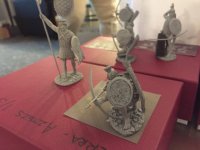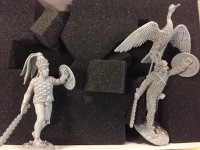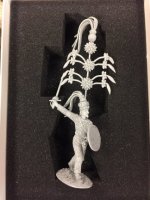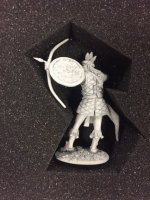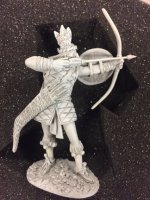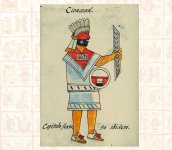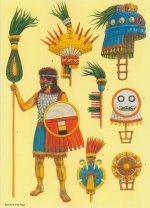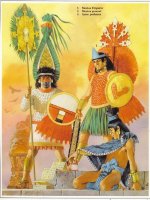NEW RELEASES FOR DECEMBER 2018
THE CONQUEST OF AMERICA
THE AZTEC EMPIRE
The Aztec Empire flourished between c. 1345 and 1521 and, at its greatest extent, covered most of northern Mesoamerica. Aztec warriors were able to dominate their neighbouring states and permit rulers such as Motecuhzoma II to impose Aztec ideals and religion across Mexico. Highly accomplished in agriculture and trade, the last of the great Mesoamerican civilizations was also noted for its art and architecture which ranks amongst the finest ever produced on the continent.
The empire continued to expand from 1430 and the Aztec military - bolstered by conscription of all adult males, men supplied from allied and conquered states, and such elite groups as the Eagle and Jaguar warriors - swept aside their rivals. Aztec warriors wore padded cotton armour, carried a wooden or reed shield covered in hide, and wielded weapons such as a super sharp obsidian sword-club (macuahuitl), a spear or dart thrower (atlatl), and bow and arrows. Elite warriors also wore spectacular feathered and animal skin costumes and headdresses to signify their rank. Battles were concentrated in or around major cities and when these fell the victors claimed the whole surrounding territory. Regular tributes were extracted and captives were taken back to Tenochtitlan for ritual sacrifice. In this way the Aztec empire came to cover most of northern Mexico, an area of some 135,000 square kilometres.
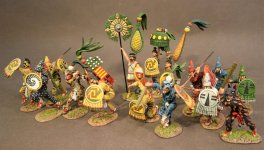
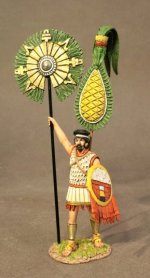
AZ-02
THE CONQUEST OF AMERICA,
THE AZTEC EMPIRE,
AZTEC GENERAL WITH NATIONAL STANDARD,
(2pcs)
The banner is the Aztec national standard of Quetzalteopamitl, which was an enormous fan of gold and quetzal feathers.
SPANISH CONQUISTADORS
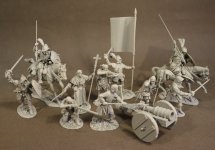
From the moment of Christopher Columbus' discovery of lands previously unknown to Europe in
1492, the New World captured the imagination of European adventurers. Thousands of men came
to the New World to seek fortune, glory, and land. For two centuries, these men explored the New
World, conquering any native people they came across in the name of the King of Spain (and the
hope of gold). They came to be known as the Conquistadors.
Conquistadors claimed that they were attacking the New World natives in order to spread Christianity and save the natives from ****ation. Many of the conquistadors were, indeed, religious men, but history has shown that the conquistadors were far more interested in gold and loot.
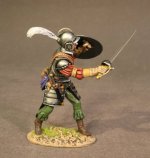
CQ-06
THE CONQUEST OF AMERICA,
SPANISH CONQUISTADORS,
SWORD AND BUCKLER MAN.
(2pcs)
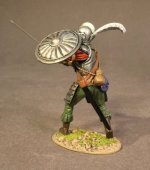
**PLEASE CONTACT YOUR LOCAL DEALER FOR FURTHER INFORMATION**
THE CONQUEST OF AMERICA
THE AZTEC EMPIRE
The Aztec Empire flourished between c. 1345 and 1521 and, at its greatest extent, covered most of northern Mesoamerica. Aztec warriors were able to dominate their neighbouring states and permit rulers such as Motecuhzoma II to impose Aztec ideals and religion across Mexico. Highly accomplished in agriculture and trade, the last of the great Mesoamerican civilizations was also noted for its art and architecture which ranks amongst the finest ever produced on the continent.
The empire continued to expand from 1430 and the Aztec military - bolstered by conscription of all adult males, men supplied from allied and conquered states, and such elite groups as the Eagle and Jaguar warriors - swept aside their rivals. Aztec warriors wore padded cotton armour, carried a wooden or reed shield covered in hide, and wielded weapons such as a super sharp obsidian sword-club (macuahuitl), a spear or dart thrower (atlatl), and bow and arrows. Elite warriors also wore spectacular feathered and animal skin costumes and headdresses to signify their rank. Battles were concentrated in or around major cities and when these fell the victors claimed the whole surrounding territory. Regular tributes were extracted and captives were taken back to Tenochtitlan for ritual sacrifice. In this way the Aztec empire came to cover most of northern Mexico, an area of some 135,000 square kilometres.


AZ-02
THE CONQUEST OF AMERICA,
THE AZTEC EMPIRE,
AZTEC GENERAL WITH NATIONAL STANDARD,
(2pcs)
The banner is the Aztec national standard of Quetzalteopamitl, which was an enormous fan of gold and quetzal feathers.
SPANISH CONQUISTADORS

From the moment of Christopher Columbus' discovery of lands previously unknown to Europe in
1492, the New World captured the imagination of European adventurers. Thousands of men came
to the New World to seek fortune, glory, and land. For two centuries, these men explored the New
World, conquering any native people they came across in the name of the King of Spain (and the
hope of gold). They came to be known as the Conquistadors.
Conquistadors claimed that they were attacking the New World natives in order to spread Christianity and save the natives from ****ation. Many of the conquistadors were, indeed, religious men, but history has shown that the conquistadors were far more interested in gold and loot.

CQ-06
THE CONQUEST OF AMERICA,
SPANISH CONQUISTADORS,
SWORD AND BUCKLER MAN.
(2pcs)

**PLEASE CONTACT YOUR LOCAL DEALER FOR FURTHER INFORMATION**


